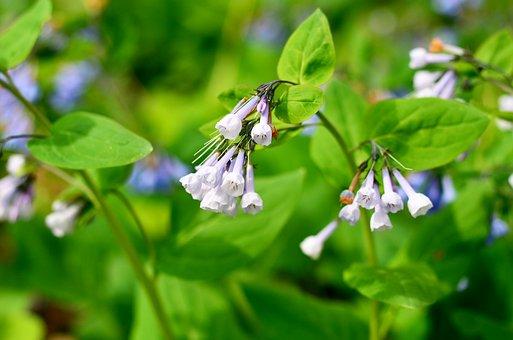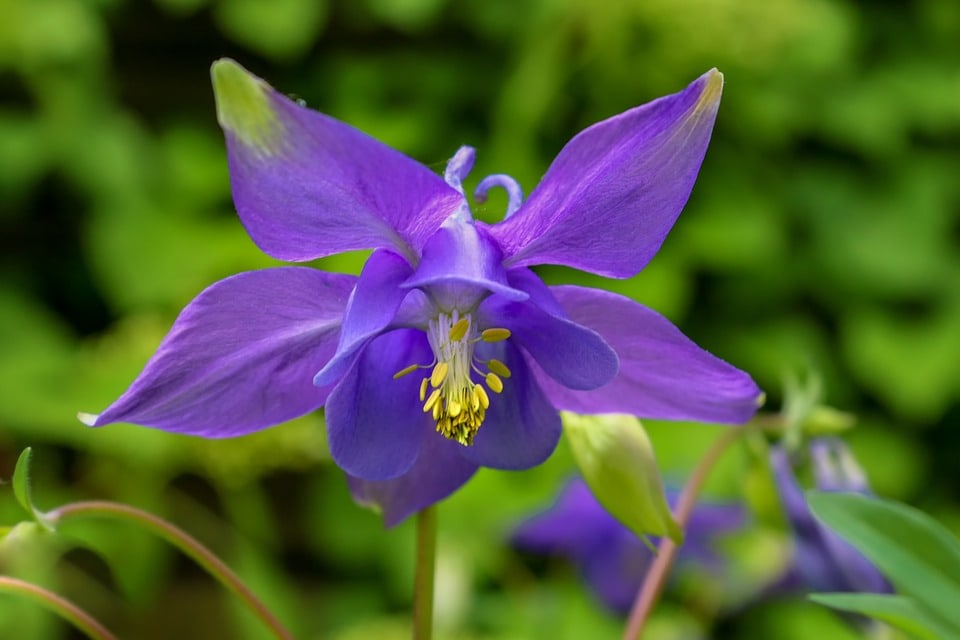Native columbine. Photo Pixabay
Everybody is talking about native plants in our landscapes. Why?
What are native plants?
Native plants are plants that have evolved in a particular place over a long enough period of time to develop complex and essential relationships with the physical environment and other organisms in an ecological community.
Why is it important for plants to develop complex relationships in the environment?
Many insects can only digest plants with which they co-evolved. 90% of native insects are specialists and feed only on 3 or 4 families of plants. 96% of terrestrial birds feed insects to their young. In fact, one pair of breeding birds brings over 300 caterpillars a day to the nest, requiring 5000+ to raise one nest of young! The caterpillars of butterflies and moths feed on the leaves of very specific plants. Monarch butterfly larvae develop only on milkweed species. Native plants are 4 times more attractive to pollinators.
Conversely, many exotic, non-native species have been introduced into the environment. Plants and animals have been imported for landscapes since colonial times. Unfortunately, diseases and insects were also imported that adversely affect the environment, Japanese beetles for example. Many trees and plants have escaped cultivation and have become invasive species. Invasives compete with and may even hybridize with native vegetation and deplete the soil of nutrients in addition to impacting the insect/bird/pollinator populations. Multiflora roses, kudzu, ornamental bittersweet, mile-a-minute vine, purple loosestrife, and garlic mustard are examples of invasives that are frequently found in our area.

Virginia bluebells. Photo Pixabay
How can natives be introduced into my landscape?
Start small! The easiest way to begin introducing natives is to replace ailing and invasive plants with native varieties. Fill bare spots in your garden with new native plants. On a larger scale, convert infrequently used areas of your yard to natives. Plant at your property edges to provide wildlife corridors. Remove small areas of lawn and create new beds. Remember native trees and shrubs in your plan.
Consider site conditions. Assess your site by determining the amount of light and moisture it receives throughout the day and growing season. Analyze the soil texture and soil fertility.
What plants should I choose?
1. Buy locally grown plants from a reputable source. Local plants are genetically adapted to regional environmental conditions. They better adapt to local soils, climate, and weather.
2. Choose flowers with a range of shapes and colors. Producing variety will provide food for different kinds of pollinators.
3. Include host plants for larval stages of insects and butterflies. Moth and butterfly larvae feed on leaves of very specific plants.
4. Plant flowers in groups. Pollinators can more easily find plants in an area showing drifts of color. Purchase 3 or more of one type of plant and plant them together in your garden.
5. Keep bloom time and duration in mind. Choose a variety of plants to give nectar and pollen sources to pollinators throughout the season Your garden will be aesthetically beautiiful all season long.
6. Avoid modern hybrids. Many hybrids have been bred to provide larger blooms and showy colors but at the same time have lost their ability to produce nectar for the pollinators. It’s best to purchase older heirloom varieties.
7. Remember trees and shrubs. Many woody plants bloom early in the season, giving an early nectar source.

Mountain laurel. Photo Pixabay
With a little planning, you can have a beautiful landscape for you and the environment! Whitehouse Landscaping strives to practice environmentally sound and sustainable landscape practices. We take our Green Initiative approach to landscaping seriously and often incorporate native trees and plants into planting schemes. Read more about Pennsylvania Native Trees and Shrubs. Read more about Pennsylvania Native Perennials. Sam holds the designation of CLT (Certified Landscape Technician) and Certified Arborist. Contact Whitehouse Landscaping or call 494-300-4290 if you would like a free consultation regarding your home landscape.
Darlene Hofmeister volunteers as our guest blogger. She is a lifelong gardener, and has recently earned credentials to become a Master Gardener through Penn State Cooperative Extension’s program. Her love of education and desire to share knowledge with others continues past her 35-year teaching career.

